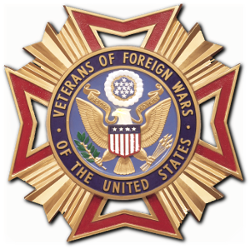"We sleep safely at night because rough men stand ready to visit violence on those who would harm us."
Winston Churchill
World War II
It was the bloodiest, deadliest war the world had ever seen. More than 38 million people died, many of them innocent civilians. It also was the most destructive war in history. Fighting raged in many parts of the world. More than 50 nations took part in the war, which changed the world forever.
For Americans, World War II had a clear-cut purpose. People knew why they were fighting: to defeat tyranny. Most of Europe had been conquered by Nazi Germany, which was under the iron grip of dictator Adolf Hitler. The war in Europe began with Germany's invasion of Poland in 1939. Wherever the Nazis went, they waged a campaign of terror, mainly against Jews, but also against other minorities.
In Asia and the Pacific, Japanese armies invaded country after country, island after island. On December 7, 1941, Japanese planes bombed Pearl Harbor, Hawaii. The next day, the U.S. Congress declared war, taking the U.S. into World War II.
Korean War
On June 25, 1950, the armed forces of the Democratic People's Republic of Korea (North Korea) crossed the 38th parallel, the line dividing Korea into two parts, and invaded the Republic of Korea (South Korea). The attack, aimed at reuniting the country under Communist rule from the North, sparked the Korean War. Two days later, the United Nations Security Council approved a resolution, introduced by the United States, asking member nations to assist South Korea. The resolution succeeded because the Soviet Union, North Korea's supporter, was absent and unable to veto, or reject, the measure.
Under the flag of the United Nations, 16 countries sent military forces to South Korea's defense, most coming from the United States. Many others contributed equipment, supplies, and other support. North Korea's main allies were the Soviet Union, which supplied it with arms, and China, which later sent many troops.
Vietnam War
Between 1945 and 1954, the Vietnamese waged an anti-colonial war against France, which received $2.6 billion in financial support from the United States. The French defeat at the Dien Bien Phu was followed by a peace conference in Geneva. As a result of the conference, Laos, Cambodia, and Vietnam received their independence, and Vietnam was temporarily divided between an anti-Communist South and a Communist North. In 1956, South Vietnam, with American backing, refused to hold unification elections. By 1958, Communist-led guerrillas, known as the Viet Cong, had begun to battle the South Vietnamese government.
To support the South's government, the United States sent in 2,000 military advisors--a number that grew to 16,300 in 1963. The military condition deteriorated, and by 1963, South Vietnam had lost the fertile Mekong Delta to the Viet Cong. In 1965, President Lyndon Johnson escalated the war, commencing air strikes on North Vietnam and committing ground forces--which numbered 536,000 in 1968. The 1968 Tet Offensive by the North Vietnamese turned many Americans against the war.
Desert Storm
Iraqi leader Saddam Hussein ordered the invasion and occupation of neighboring Kuwait in early August 1990. Alarmed by these actions, fellow Arab powers such as Saudi Arabia and Egypt called on the United States and other Western nations to intervene. Hussein defied United Nations Security Council demands to withdraw from Kuwait by mid-January 1991, and the Persian Gulf War began with a massive U.S.-led air offensive known as Operation Desert Storm. After 42 days of relentless attacks by the allied coalition in the air and on the ground, U.S. President George H.W. Bush declared a cease-fire on February 28; by that time, most Iraqi forces in Kuwait had either surrendered or fled. Though the Persian Gulf War was initially considered an unqualified success for the international coalition, simmering conflict in the troubled region led to a second Gulf War–known as the Iraq War–that began in 2003.
www.history.comOperation Iraqi Freedom
Operation Iraqi Freedom was the largest of several active fronts in the Bush administration's War on Terrorism. Other fronts included Afghanistan, Philippines, and the Horn of Africa. Operation Iraqi Freedom began on 3 March 2003 with the removal of the Ba'athist regime of Saddam Hussein by a "Coalition of the Willing" led by the United States and allies including the United Kingdom. An interim government, Constitutional Assembly, and later an elected Parliament and Executive assumed authority, however sectarian insurgent violence led by Abu Musab al-Zarqawi's Islamic State of Iraq and the Levant has hindered stability and reconstruction efforts by US contractors and the new government. Iraq's new Constitution strictly limits the emergency powers of the Executive in dealing with civil strife--a post Saddam democratic reform. "10 Years After the Invasion 40 per cent of Iraqi have a job and a quarter of families live below the World Bank’s poverty line; Some in the younger generation of Iraqis who survived the years of violence see the decade of the US occupation as a requiem for their dream; education system is one of the things worst damaged by the war in Iraq, health and infrastructure are also on that list."
President Barack Obama declared an official end to Operation Iraqi Freedom on August 31, 2010 and ceased funding the War on Terror in 2009.

